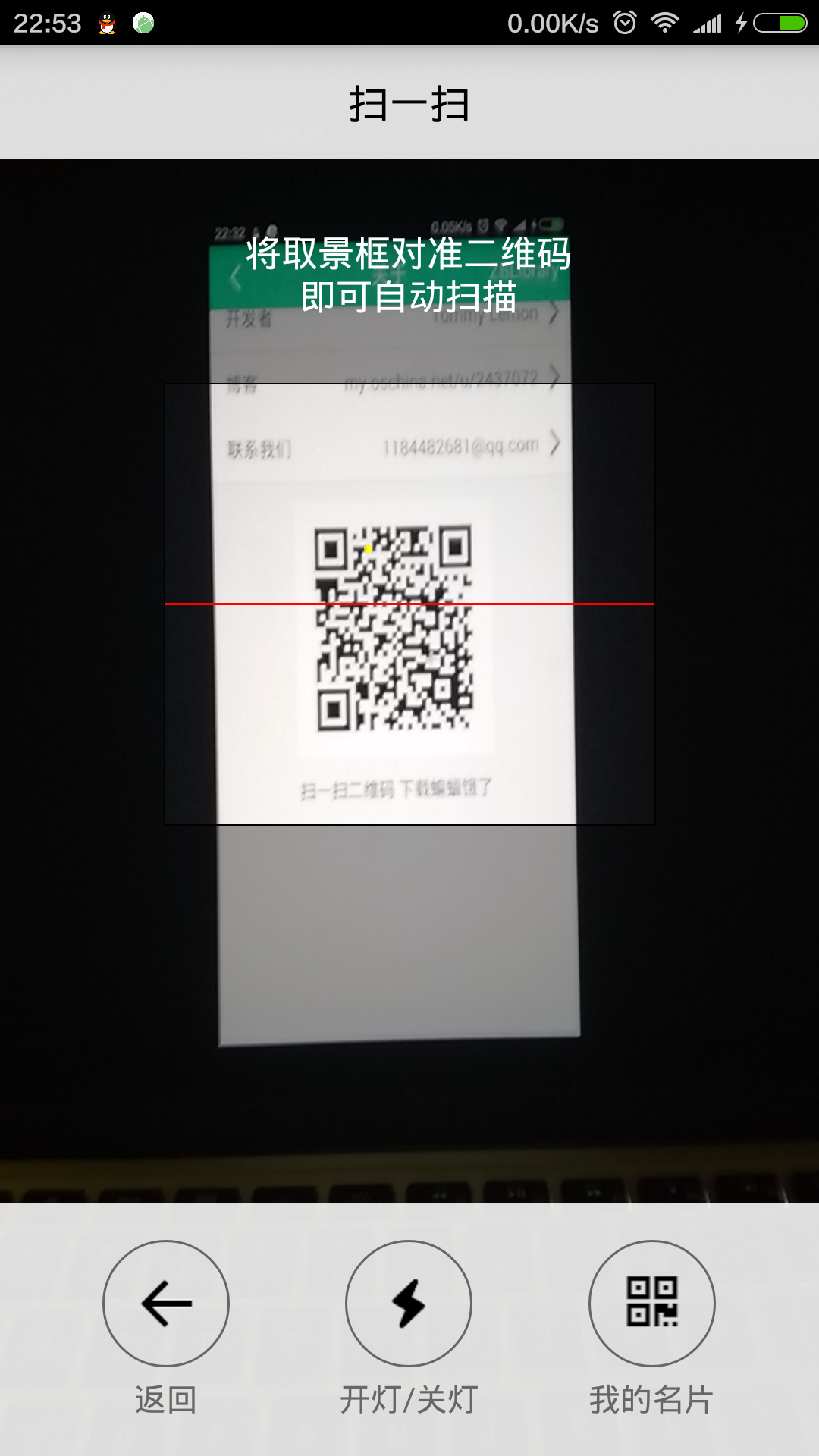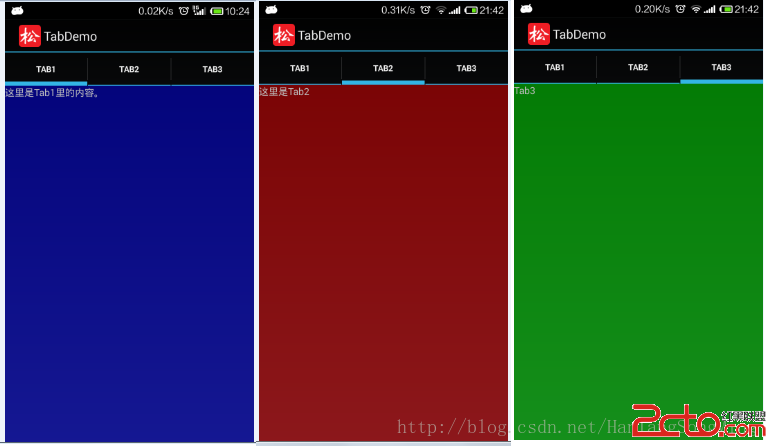編輯:關於Android編程
Loaders機制在Android 3.0版本後引入。Loaders機制使一個Activity或者一個Fragment更加容易異步加載數據。Loaders有如下的特性:
Ø 它們適用於任何Activity和Fragment;
Ø 它們提供了異步加載數據的機制;
Ø 它們檢測數據源,當數據源內容改變時它們能夠傳遞新的結果;
Ø 當配置改變後需要重新創建時,它們會重新連接到最後一個loader的游標。這樣,它們不需要重新查詢它們的數據。
在app裡可以使用與loaders相關的很多的類和接口。總結如下:
Class/Interface
描述
LoaderManager
一個與Activity和Fragment有關聯的抽象類,用於管理一個或多個Loader實例。這有助於app管理長運行操作。使用它的最顯著的例子是CursorLoader。每個Activity或Fragment只能有一個LoaderManager。而一個LoaderManager可以有多個loaders。
LoaderManager.LoaderCallbacks
提供給客戶端的一個callback接口,用於和LoaderManager進行交互。例如,你可以使用onCreateLoader() callback來創建一個新的loader。
AsyncTaskLoader
一個抽象Loader,提供一個AsyncTask進行工作。
CursorLoader
AsyncTaskLoader的子類,用於向ContentResover請求,返回一個Cursor。這個類以標准的游標查詢方式實現了Loader協議,建立了AsyncTaskLoader,使用一個後台線程來進行游標查詢,不會阻塞app的UI。因此,使用這個loader是從ContentProvider加載異步數據的最好的方式。
上述的class和interface是你在app裡實現一個loader所需要的組件。你不必使用所有的組件,但是你通常需要一個LoaderManager的引用(用於初始化一個loader)和一個Loader實現類(例如CursorLoader)。
一個App裡,典型的使用loaders包含的內容如下:
一個Activity或一個Fragment。
一個LoaderManager的實例。
一個CursorLoader,從一個ContentProvider裡加載數據。
一個LoaderManager.LoaderCallbacks的實現。在這你創建新的loader,和管理已經存在的loaders。
一種顯示loader加載數據的方式,例如SimpleCursorAdapter。
一種數據源,例如一個Conterprovider(當使用CursorLoader)。
在一個Activity或Fragment裡,LoaderManager管理一個或多個loader實例。每個Activity或Fragment只有一個LoaderManager。
你可要在Activity裡的onCreate()方法裡,或者在Fragment裡的onActivityCreated()方法裡初始化一個loader。例如:
// Prepare the loader. Either re-connect with an existing one,
// or start a new one.
getLoaderManager().initLoader(0,null, this);
initLoader()方法有三個參數:
Ø 一個標志loader的ID。
Ø 提供給loader構造函數的參數,可選。
Ø 一個LoaderManager.LoaderCallbacks的實現。
initLoader()的調用確保了一個loader被初始化和激活。它有兩種結果:
如果標志loader的ID已經存在,則最後創建的loader被復用。
如果標志loader的ID不存在,initLoader()會激發LoaderManager.LoaderCallbacks的方法onCreateLoader()。
在這兩種情形下,給定的LoaderManager.LoaderCallbacks實例被關聯到loader,並且當loader狀態變化時被調用。如果調用者正處於其開始狀態並且被請求的loader已經存在,且已產生了數據,那麼系統立即調用onLoadFinished()(在initLoader()調用期間),所以你必須准備好這種情況的發生。
記住,intiLoader()會返回一個創建的loader,但是你不需要來獲取它的引用。LoadeManager會自動管理loader的生命周期。LoaderManager會開始loading,結束loading,維護loader的狀態,以及相關的內容。這意味著,你幾乎不用直接和loaders進行交互。當有特定事件發生時,你僅僅需要使用LoaderManager.LoaderCallbacks方法來干預loading的過程。
當你調用一個initLoader(),如上述所示,你會得到一個ID已經存在的loader,或者創建一個新的loader。但是有時候,你想丟棄掉你的舊數據,重新開始。
要丟棄掉你的舊數據,你要調用restartLoader()。例如,SearchView.OnQueryTextListener的實現重啟了loader,當用戶的查詢發生變化時。loader需要重啟,是由於它要使用修改過的搜索過濾器來進行新的查詢:
public boolean onQueryTextChanged(String newText) {
// Called when the action bar search text has changed. Update
// the search filter, and restart the loader to do a new query
// with this filter.
mCurFilter = !TextUtils.isEmpty(newText) ? newText : null;
getLoaderManager().restartLoader(0, null, this);
return true;
}
LoaderManager.LoaderCallbacks是callback接口,給client提供與LoaderManager交互的接口。
Loaders,特別是CursorLoader,在被停止後期望能夠維持它們的數據。這允許apps在actvitiy或fragemnt的onStop()和onStart()方法裡能夠保持它們的數據,它們不需要等待數據重新被加載。你使用LoaderManager.LoaderCallbacks方法,知道什麼時候該創建一個新的loader,告訴apps什麼時候該停止使用一個loader的數據。
LoaderManager.LoaderCallbacks包含了三個方法:
onCreateLoader()--- 實例化和返回一個新創建的給定ID的loader
onLoadFinished()--- 當一個創建好的loader完成了load,調用此函數
onLoaderReset()--- 當一個創建好的loader要被reset,調用此函數,這樣導致它的數據無效
當你嘗試訪問一個loader(例如,通過initLoader()),它會檢查給定的loader的ID是否存在。如果不存在,它會觸發LoaderManager.LoaderCallbacks裡的方法onCreateLoader(),來創建一個新的loader。典型的例子是CursorLoader。
在這個例子裡,onCreateLoader()回調函數創建一個CursorLoader。你必須使用CursorLoader的構造函數,它需要一些額外的信息用於查詢一個ContentProvider。它需要:
uri--- 取得內容的URI。
projection--- 要返回的列的list。傳遞null則返回所有的列,這種做法不夠高效。
selectionArgs--- 你也許要在selection裡包含 ?s,被selectionArgs裡的值替換。
sortOrder--- 行的排序由SQL ORDER BY語句來格式化。傳遞null則返回默認的排序,也許無序。
例如:
// If non-null, this is the current filter the user has provided. String mCurFilter; ... public LoaderonCreateLoader(int id, Bundle args) { // This is called when a new Loader needs to be created. This // sample only has one Loader, so we don't care about the ID. // First, pick the base URI to use depending on whether we are // currently filtering. Uri baseUri; if (mCurFilter != null) { baseUri = Uri.withAppendedPath(Contacts.CONTENT_FILTER_URI, Uri.encode(mCurFilter)); } else { baseUri = Contacts.CONTENT_URI; } // Now create and return a CursorLoader that will take care of // creating a Cursor for the data being displayed. String select = (( + Contacts.DISPLAY_NAME + NOTNULL) AND ( + Contacts.HAS_PHONE_NUMBER + =1) AND ( + Contacts.DISPLAY_NAME + != '' )); return new CursorLoader(getActivity(), baseUri, CONTACTS_SUMMARY_PROJECTION, select, null, Contacts.DISPLAY_NAME + COLLATE LOCALIZED ASC); }
當一個創建好的loader結束了它的load,此方法被調用。這個方法確保在釋放loader維持的數據之前調用。在這個點上,你應當移除所有對舊數據的使用(因為舊數據不久就要被釋放),不用釋放舊數據,loader會完成舊數據的釋放。
loader一旦知道app不再使用它,它就會釋放掉數據。例如,如果數據是來自CursorLoader裡的一個cursor,你不應當自己調用close()。如果一個cursor正在放置到一個CursorAdapter,你應當使用swapCursor()方法,這樣舊的Cursor就不會被關掉。
例如:
// This is the Adapter being used to display the list's data. SimpleCursorAdapter mAdapter; ... public void onLoadFinished(Loaderloader, Cursor data) { // Swap the new cursor in. (The framework will take care of closing the // old cursor once we return.) mAdapter.swapCursor(data); }
2.3.3onLoaderReset
當建立好的loader正在被重啟時,此方法被調用,這樣讓loader的數據置於無效狀態。這個回調函數讓你發現什麼時候數據要被釋放掉,在這個點上你可要移除對它的引用。
例如:
// This is the Adapter being used to display the list's data. SimpleCursorAdapter mAdapter; ... public void onLoaderReset(Loaderloader) { // This is called when the last Cursor provided to onLoadFinished() // above is about to be closed. We need to make sure we are no // longer using it. mAdapter.swapCursor(null); }
這個樣例是一個Fragment的實現,它使用ListView顯示了通訊錄查詢的結果,使用CursorLoader來管理通訊錄Provider的查詢。app若需要訪問通訊錄,你需要在mainfest裡添加權限READ_CONTACTS。
public static class CursorLoaderListFragment extends ListFragment
implements OnQueryTextListener, LoaderManager.LoaderCallbacks {
// This is the Adapter being used to display the list's data.
SimpleCursorAdapter mAdapter;
// If non-null, this is the current filter the user has provided.
String mCurFilter;
@Override public void onActivityCreated(Bundle savedInstanceState) {
super.onActivityCreated(savedInstanceState);
// Give some text to display if there is no data. In a real
// application this would come from a resource.
setEmptyText(No phone numbers);
// We have a menu item to show in action bar.
setHasOptionsMenu(true);
// Create an empty adapter we will use to display the loaded data.
mAdapter = new SimpleCursorAdapter(getActivity(),
android.R.layout.simple_list_item_2, null,
new String[] { Contacts.DISPLAY_NAME, Contacts.CONTACT_STATUS },
new int[] { android.R.id.text1, android.R.id.text2 }, 0);
setListAdapter(mAdapter);
// Prepare the loader. Either re-connect with an existing one,
// or start a new one.
getLoaderManager().initLoader(0, null, this);
}
@Override public void onCreateOptionsMenu(Menu menu, MenuInflater inflater) {
// Place an action bar item for searching.
MenuItem item = menu.add(Search);
item.setIcon(android.R.drawable.ic_menu_search);
item.setShowAsAction(MenuItem.SHOW_AS_ACTION_IF_ROOM);
SearchView sv = new SearchView(getActivity());
sv.setOnQueryTextListener(this);
item.setActionView(sv);
}
public boolean onQueryTextChange(String newText) {
// Called when the action bar search text has changed. Update
// the search filter, and restart the loader to do a new query
// with this filter.
mCurFilter = !TextUtils.isEmpty(newText) ? newText : null;
getLoaderManager().restartLoader(0, null, this);
return true;
}
@Override public boolean onQueryTextSubmit(String query) {
// Don't care about this.
return true;
}
@Override public void onListItemClick(ListView l, View v, int position, long id) {
// Insert desired behavior here.
Log.i(FragmentComplexList, Item clicked: + id);
}
// These are the Contacts rows that we will retrieve.
static final String[] CONTACTS_SUMMARY_PROJECTION = new String[] {
Contacts._ID,
Contacts.DISPLAY_NAME,
Contacts.CONTACT_STATUS,
Contacts.CONTACT_PRESENCE,
Contacts.PHOTO_ID,
Contacts.LOOKUP_KEY,
};
public Loader onCreateLoader(int id, Bundle args) {
// This is called when a new Loader needs to be created. This
// sample only has one Loader, so we don't care about the ID.
// First, pick the base URI to use depending on whether we are
// currently filtering.
Uri baseUri;
if (mCurFilter != null) {
baseUri = Uri.withAppendedPath(Contacts.CONTENT_FILTER_URI,
Uri.encode(mCurFilter));
} else {
baseUri = Contacts.CONTENT_URI;
}
// Now create and return a CursorLoader that will take care of
// creating a Cursor for the data being displayed.
String select = (( + Contacts.DISPLAY_NAME + NOTNULL) AND (
+ Contacts.HAS_PHONE_NUMBER + =1) AND (
+ Contacts.DISPLAY_NAME + != '' ));
return new CursorLoader(getActivity(), baseUri,
CONTACTS_SUMMARY_PROJECTION, select, null,
Contacts.DISPLAY_NAME + COLLATE LOCALIZED ASC);
}
public void onLoadFinished(Loader loader, Cursor data) {
// Swap the new cursor in. (The framework will take care of closing the
// old cursor once we return.)
mAdapter.swapCursor(data);
}
public void onLoaderReset(Loader loader) {
// This is called when the last Cursor provided to onLoadFinished()
// above is about to be closed. We need to make sure we are no
// longer using it.
mAdapter.swapCursor(null);
}
}
 Android控件架構與自定義控件詳解(二)——自定義View
Android控件架構與自定義控件詳解(二)——自定義View
在自定義View時,我們通常會去重寫onDraw()方法來繪制View的顯示內容。如果該View還需要使用wrap_content屬性,那麼還必須重寫onMeasure(
 Android開發框架之自定義ZXing二維碼掃描界面並解決取景框拉伸問題
Android開發框架之自定義ZXing二維碼掃描界面並解決取景框拉伸問題
先給大家展示下效果圖:掃描內容是下面這張,二維碼是用zxing庫生成的由於改了好幾個類,還是去年的事都忘得差不多了,所以只能上這個類的代碼了,主要就是改了這個Captur
 Android編程實現AIDL(跨進程通信)的方法詳解
Android編程實現AIDL(跨進程通信)的方法詳解
本文實例講述了Android編程實現AIDL(跨進程通信)的方法。分享給大家供大家參考,具體如下:一. 概述:跨進程通信(AIDL),主要實現進程(應用)間數據共享功能。
 Android UI之Tab
Android UI之Tab
Tab標簽頁是UI設計時經常使用的UI控件,可以實現多個分頁之間的快速切換,每個分頁可以顯示不同的內容。 TabHost相當於浏覽器中標簽頁分布的集合,而Tabspec